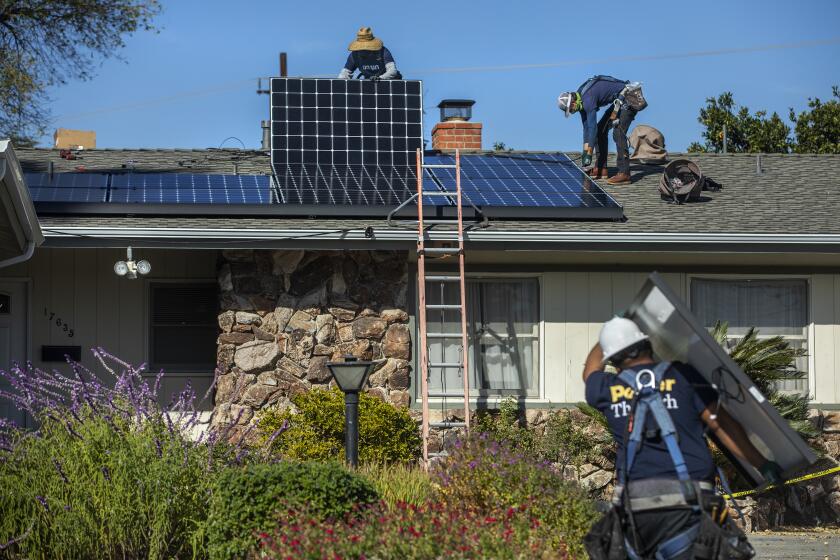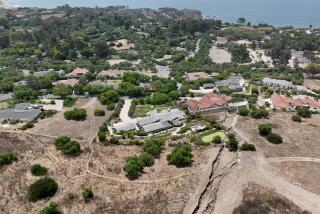Texas blackouts show the power grid isn’t ready for climate change
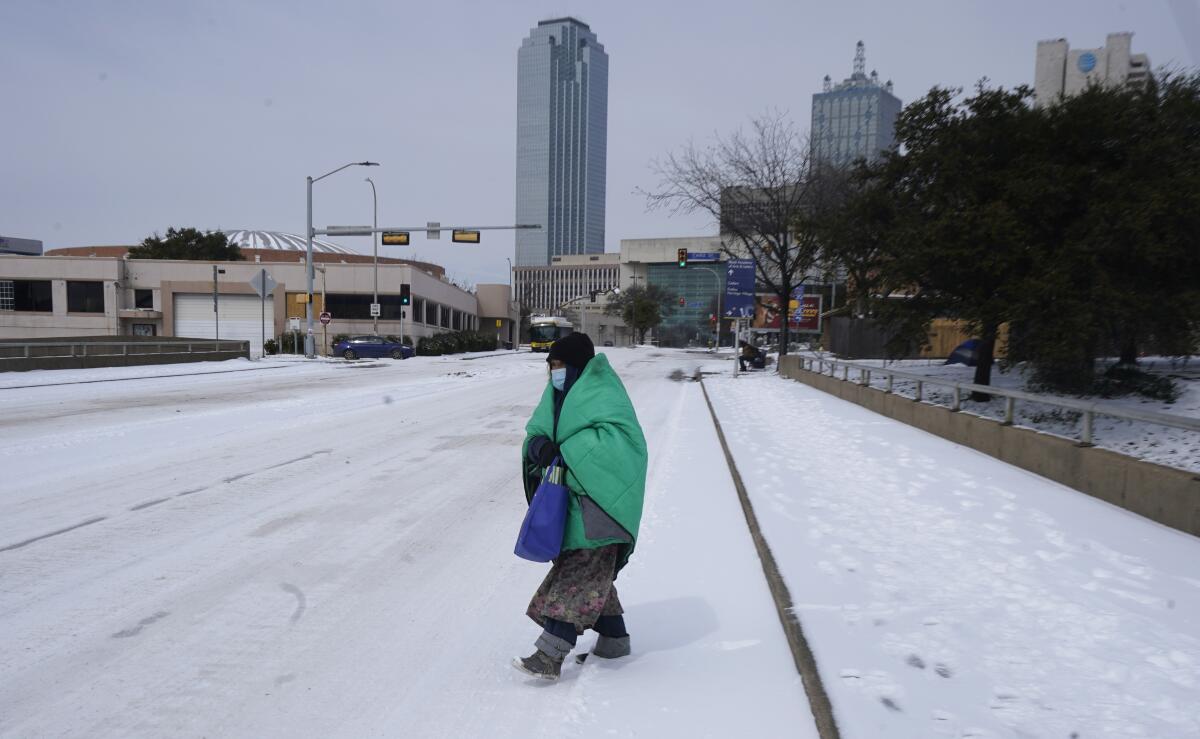
- Share via
When a few hundred thousand California homes and businesses lost power for several hours last summer, Texas Sen. Ted Cruz wrote that the Golden State “is now unable to perform even basic functions of civilization, like having reliable electricity.”
What Texans have experienced over the last few days was far worse.
More than 4 million homes and businesses saw their electricity shut off as a powerful cold snap sent temperatures into the single digits, driving up demand for heating while simultaneously freezing much of the energy infrastructure that would normally keep people warm. Rolling blackouts began in the wee hours of Monday morning and continued into Tuesday evening.
At least 20 people were reported dead in storm-related incidents in the eastern half of the country, including several in Texas — and experts said it was all but certain that the death toll would rise. Harris County, home to Houston, reported hundreds of cases of carbon monoxide poisoning as people tried to stay warm by using portable generators or running their cars indoors.
But for all the differences between the events in Texas and California’s more limited rolling blackouts last year, there’s a common lesson: Extreme weather events are becoming more frequent and more severe as the climate crisis worsens. And the U.S. power grid is not prepared to handle the hotter heat storms, more frigid cold snaps and stronger hurricanes of a changing planet.
“It’s gonna be bad,” said Ed Hirs, an energy economist at the University of Houston.
Adding to the challenge, efforts to harden existing infrastructure against extreme weather won’t be enough.
Most of the country’s power comes from coal, oil and natural gas — the very fuels driving climate change. The grid of the future will need to be powered primarily by zero-carbon electricity sources, such as solar and wind — and rebuilding the grid from top to bottom, without further disrupting energy supplies, will be a delicate balancing act.
California and Texas offer a preview of the risks, and potential solutions.
In the Lone Star State, some skeptics of climate change blamed the rolling blackouts on frozen wind turbines. The Wall Street Journal editorial board used the emergency to argue that the nation’s power grid “is becoming less reliable due to growing reliance on wind and solar, which can’t provide power 24 hours a day, seven days a week.”
The Electric Reliability Council of Texas, which operates the power grid for most of the state, told a different story.
ERCOT data showed that wind farms generated less electricity overall than the grid operator would have expected during a cold snap, although at times they exceeded expectations. But the power sources that underperformed on the largest scale were coal and gas plants that had equipment freeze over or couldn’t get sufficient fuel on site as drilling operations and pipelines struggled to work properly. At one point, 34 gigawatts of power were offline — more than a third of the state’s generating capacity.
Wholesale electricity prices jumped by more than 10,000% Monday as power supplies grew scarce.
“If we believe climate change is fueling these events, we can’t just keep doing more of the same, or we’ll be in the same boat in the not-too-distant future,” said Joshua Rhodes, an energy researcher at the University of Texas at Austin.
It’s a boat Texans who lost power over the last 48 hours have no desire to be in again.
Toward a more sustainable California
Get Boiling Point, our newsletter exploring climate change, energy and the environment, and become part of the conversation — and the solution.
You may occasionally receive promotional content from the Los Angeles Times.
In Austin, Lezli Regis, 42, was trapped by the storm in her one-bedroom apartment with her 9-year-old son Theo and their three cats, all surrounding roads impassable. She tried to go to work Saturday at the veterinary clinic she manages but had to turn around. She lost power and hot water at the start of the storm, and most of the contents of her refrigerator spoiled.
By Tuesday, she was running out of food.
“We might start eating cat food, because there’s literally nothing else,” she said.
Texas wasn’t the only state to find itself short on power amid the storm. The Southwest Power Pool, which oversees the electric grid across parts of 14 states from Louisiana to Montana, also ordered rotating outages Monday and Tuesday.
But Texas has suffered the worst blackouts, and residents have vented their frustration on social media, with many pleading for help from ERCOT, Gov. Greg Abbott and Sens. Cruz and John Cornyn. Some Texans wrote that they were struggling to care for newborns and infants without power or heat. Others worried about nursing homes that had been without power overnight.
Vanessa Daniel, a U.S. Army veteran, was sheltering with her 11-year-old son at their home in Killeen, where they lost power and a refrigerator full of food due to the storm. Daniel, 32, said she was worried about elderly neighbors and those with babies, and about a nearby warming center where the coronavirus might spread.
“This is incredibly careless on the part of our leaders to leave people without power for days at a time,” she said.
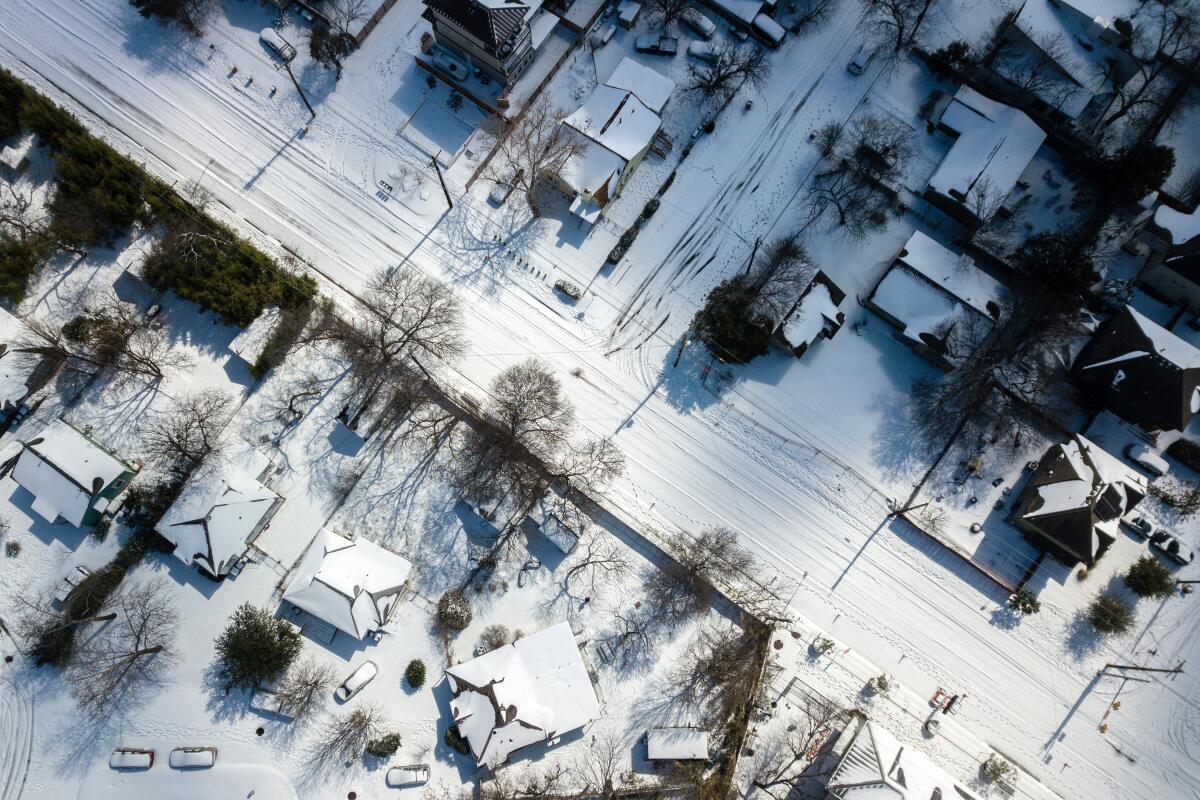
While rising global temperatures are the best-known consequence of burning fossil fuels, there’s also a growing body of scientific evidence linking this kind of cold spell across the middle of the country to rapidly warming conditions in the Arctic.
While the exact mechanisms underlying those links aren’t clear yet, the simple reality is that heat, cold and hurricanes are “all in the same bucket,” said Jennifer Francis, a senior scientist at Woodwell Climate Research Center in Massachusetts.
“As we continue to basically dump our waste products from fossil fuel burning into the atmosphere and increase the thickness of the greenhouse blanket around the Earth, we’re changing the climate system in many ways,” Francis said. “Extreme events of many sorts are going to become more frequent, more intense and longer-lasting.”
The nonprofit research group Climate Central analyzed federal data last year and found that hurricanes, wildfires, heat storms and other extreme weather events caused 67% more power outages in the United States during the decade ending in 2019 than they did during the previous decade.
Climate change was a factor in California’s blackouts last August; officials said the state experienced four of its five hottest August days in the last 35 years. Temperature records were shattered across the West, limiting California’s ability to make up for its energy deficit by importing electrons from other states. The power was needed elsewhere.
Support our journalism
Your support helps us deliver the news that matters most. Subscribe to the Los Angeles Times.
At the same time, global warming alone didn’t force the lights to go out. State officials laid some of the blame on their own poor planning, including a failure to compel utilities to build enough clean energy infrastructure that can power the grid when solar panels stop generating each evening, such as lithium-ion batteries or geothermal power plants.
Unlike California, which is targeting 100% climate-friendly electricity by 2045, Texas has no requirements to phase out fossil fuels.
But for all the political and economic power that oil and gas companies still wield in Texas — and for all the time Cruz and some other conservatives spend decrying renewable energy — Texas got 23% of its electricity from wind turbines last year.
Nearly two-thirds of Texas’ power comes from fossil fuels, compared with just one-third in California. But there’s still plenty of room for Texas to grow its wind and solar industries, and experts say it can do so while better preparing for extreme weather.
For one thing, the state operates most of its power grid as an island separate from the rest of the country, with few connections to the two major electric systems that tie together most of the lower 48 states. Originally devised as a means of avoiding federal regulation of Texas energy markets, the isolation today means ERCOT is relatively limited in its ability to import supply from other states.
“There’s a lot of excess power in this country, but we just don’t have the extension cords to bring it here,” Rhodes said.
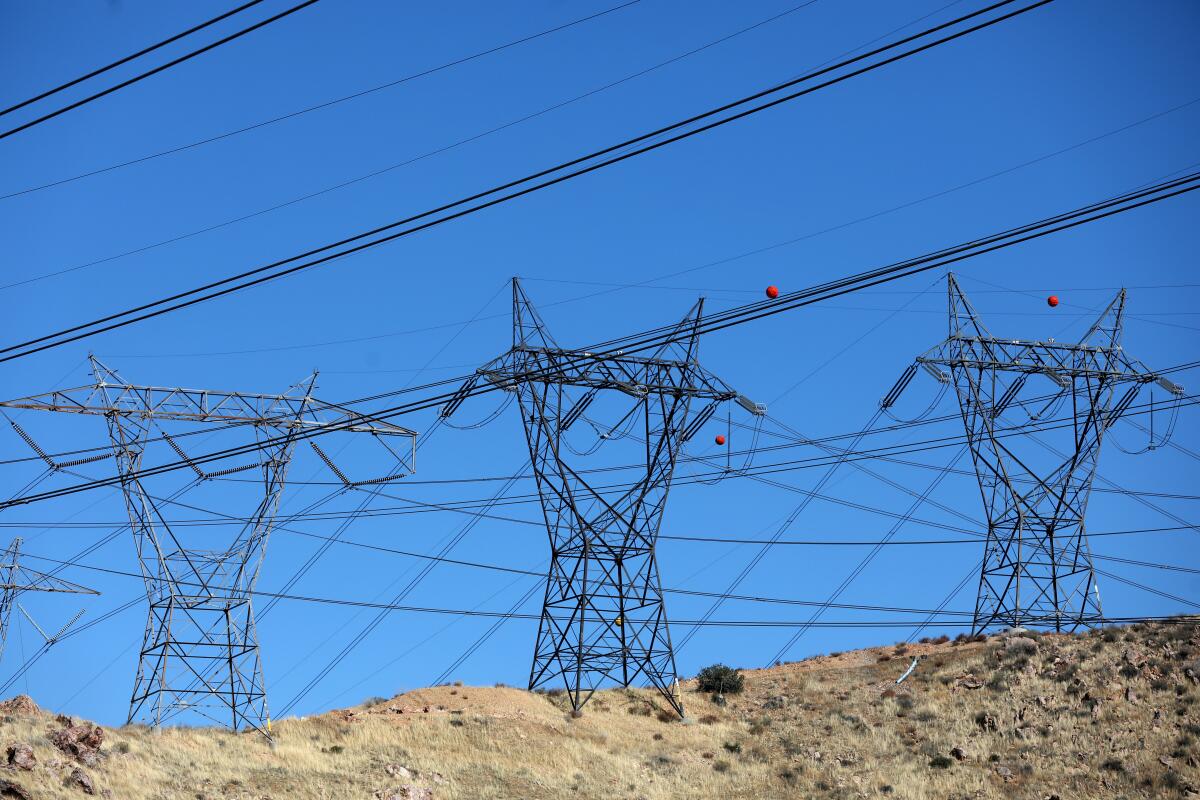
There could be climate benefits, too, from building more power lines to connect Texas with other parts of the country — mainly from making it easier to access far-flung solar and wind energy. Researchers say it’s easier and cheaper to reduce planet-warming emissions on larger power grids, because even if it’s cloudy and still in some places, it’s usually sunny and windy elsewhere.
Building better-insulated homes could be another important change.
In the Northeast and Great Lakes regions, homes are typically built to retain heat during near-zero temperatures. Not so in Texas, where hot spells, rather than cold snaps, are typically the greatest worry.
Upgrading buildings with thicker walls, strategically placed windows and other energy-efficiency measures would save lives, protect people who can’t afford higher power bills and reduce the need to spend large sums of money expanding the power grid, said Emily Grubert, a social scientist and engineer at Georgia Tech. But “weatherization” programs that help people with the upfront costs of those fixes must be improved, she added, because they often exclude the people who need them most.
“Maybe the building is condemned, or there are holes in the roof or the walls that end up making these buildings ineligible for the support programs, because the building is considered to be in such bad shape that it isn’t worth investing in,” Grubert said. “The programs don’t allow you to spend money on repairs, just upgrades.”
Electricity generation isn’t just getting cleaner — it’s getting smaller and nimbler, with help from batteries, smart thermostats and electric cars.
Rooftop solar power paired with batteries is another possible answer for Texans, and Californians, looking to keep the lights on.
In the Houston suburb of Sugar Land on Tuesday, Mark LeClair, 43, was trying to stem storm damage to his kitchen, where a pipe burst even after he wrapped it in insulation. He works remotely for a California-based construction company, managing software, and recalls having to work through the Golden State’s brownouts in August. A native Texan and lifelong Republican, he credits oil and gas with fueling the state’s economy. But he said this week’s outages have him planning to install solar panels at his house.
“We need to move toward sustainable energy,” he said.
Cruz disagrees. During California’s grid emergency last summer, he wrote that Joe Biden, Kamala Harris and U.S. Rep. Alexandria Ocasio-Cortez (D-N.Y.), a leading supporter of the Green New Deal, “want to make CA’s failed energy policy the standard nationwide.”
With President Biden pledging to achieve 100% clean energy by 2035 — and solar and wind now the cheapest sources of electricity in most of the world — that’s the way the country is going. The key question is whether policymakers like Cruz are willing to get creative to make it work, or whether they’ll double down on a power grid that’s already beginning to fail.
Times staff writer Molly Hennessy-Fiske contributed to this report from Houston.
